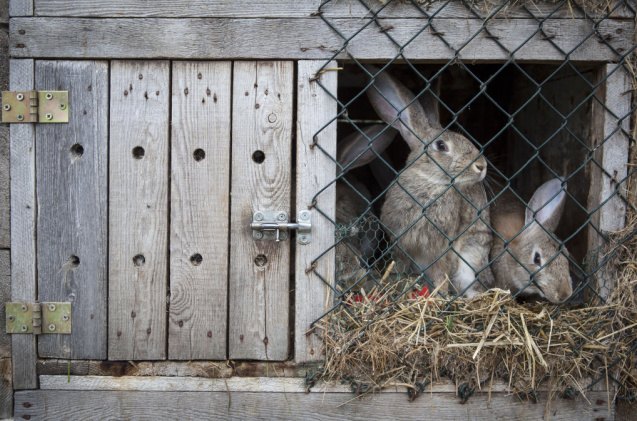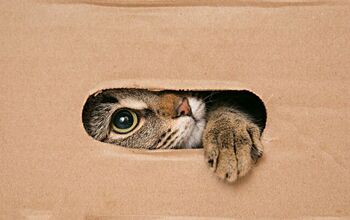All About Rabbit Housing

Rabbits can be kept outdoors or indoors, but in either case, they require proper housing. Their housing should be spacious, comfortable, and equipped with everything they need (food and water, toys, litter, etc) but it will not be a place where they spend all of their time. Rabbits are active animals and need space to roam around and hop about freely – if you’re keeping them indoors, you should give them free roam of the house for most of the time, and if you have outdoor rabbits, a large run is a must. But, for a good deal of the day, your bunny will be in their enclosure, so it’s important you make it comfy and safe for them to spend time in.
General Rabbit Housing Guidelines
There are so many different types of enclosures, hutches, cages, and pens that people use for keeping rabbits – both inside their homes and outside. Naturally, a lot will depend on the location of your rabbit’s habitat, as outdoor enclosures need to be well-protected and isolated, but there are a few general “rules” that all types of rabbit enclosures need to follow.
First is the size – a rabbit’s cage or a hutch should be large and provide ample room for them to move around, play, and go about their day. The size will depend on the number of rabbits you are keeping and their size – it’s not the same if you’re keeping a breeding pair of giants in your backyard or a tiny dwarf bunny inside your apartment.
Next, all rabbit housing options should be made from durable and rabbit-safe materials. Rabbits are big on chewing anything and everything and will try to nibble on their enclosure. This is why you want to avoid toxic paints and finishes, flimsy wires that can be bitten through and even ingested, and similar unsuitable solutions. Go for chew-proof and non-toxic materials such as untreated wood, sturdy plastic, weld or chicken wire mesh, or even powder-coated mesh (but be sure that the coating is non-toxic).
Indoor Rabbit Housing
When it comes to pet rabbits that are kept exclusively indoors, they should have the free reign of a room or area of the house that’s been rabbit-proofed to exercise and explore, but also have an enclosure of their own to retreat to. Their enclosure should be spacious enough – a good rule of thumb is that their cage should be at least four times their size, which roughly translates to 24” by 36” for dwarf and small breed rabbits under 8 pounds of weight, and around 30” by 36” for most medium to large breed bunnies. Have in mind, however, that this is the bare minimum, and the golden rule when it comes to rabbit enclosures is definitely – the bigger, the better.
For that reason, many pet owners opt for a puppy or playpen rather than a cage. It gives them more flexibility size-wise, and it is easy to install and does the job beautifully. Keep in mind that your pet’s enclosure should contain their litter box, water bowl, and a feeder, as well as a few of their toys or chews, and reconsider if the designated enclosure leaves no room for your bunny to skip, explore, jump, or dig. These are all natural behaviors for bunnies, and they need to be allowed to express them, both inside and outside the enclosure.
Outdoor Rabbit Housing
Outdoor bunnies are usually those breeds that are more robust and suited to the harsher conditions of living on the outside – but still, this doesn’t mean that they don’t require special housing. Any rabbit is vulnerable to extreme weather elements, be it scorching heat or the freezing cold, and they are prey animals that are at risk from various predators, which will mean that you have to account for both of these things when planning out an outdoor rabbit enclosure.
To minimize the effect of the elements, pick a spot in your yard that’s in a shade and away from winds, so your bunny won’t be exposed to hours of direct sun heat or be whipped by freezing winds when seasons change. And even if you find a good location that fits the bill, be prepared that, if you live in an area with extreme weather, where the winters are in subzero temperatures and summers get really hot, you will have to get your rabbit inside during these days – a barn, shed, or a garage can be an alternative if you’re not able to bring them inside your home.
The most common choice for an outdoor rabbit enclosure is a standard rabbit hutch, usually made from wood that’s untreated on the inside, with a weatherproof finish on the outside where the rabbits can’t get to it. These types of enclosures should be sturdy, raised from the ground to keep dampness and cold at bay, and properly secured to keep out potential predators that could seriously harm or kill your pet.
Conclusion
Whether you keep your bunny outside or they live inside your home with you, you need to make sure that they have a proper enclosure. The main aspects of any rabbit enclosure that you should provide are spaciousness and safety, as your bunny needs plenty of room to move around to stay healthy and happy, and the materials, as well as the design of the hutch, need to be chosen with their safety in mind, from non-toxic paints to secure latches to keep predators out. Last but not least, you should always keep in mind that your rabbit needs to be allowed time outside of their enclosure each day for exercise, at least 2 to 4 hours if possible. Inside, they can be let roam freely in a rabbit-proofed area or room of your home and if kept outdoors, they can stretch their legs in a rabbit run added to their hutch.

A proud mama to seven dogs and ten cats, Angela spends her days writing for her fellow pet parents and pampering her furballs, all of whom are rescues. When she's not gushing over her adorable cats or playing with her dogs, she can be found curled up with a good fantasy book.
More by Angela Vuckovic























